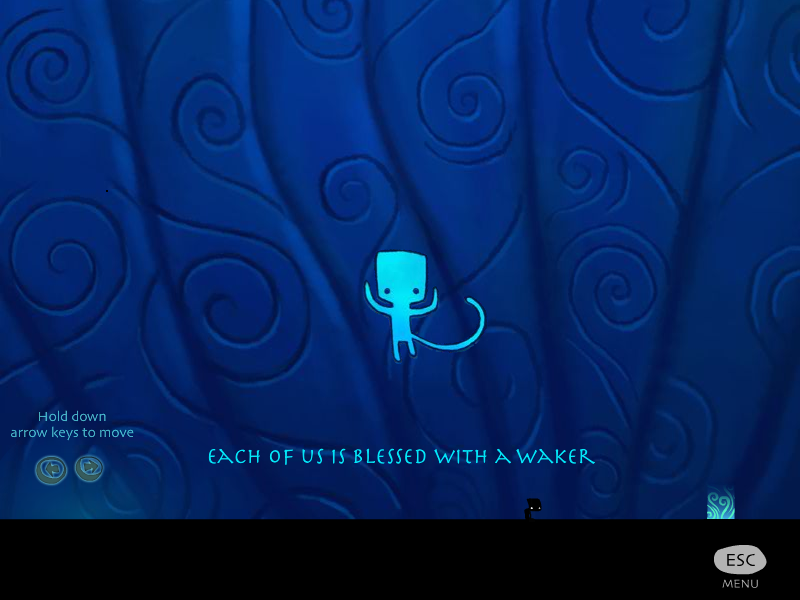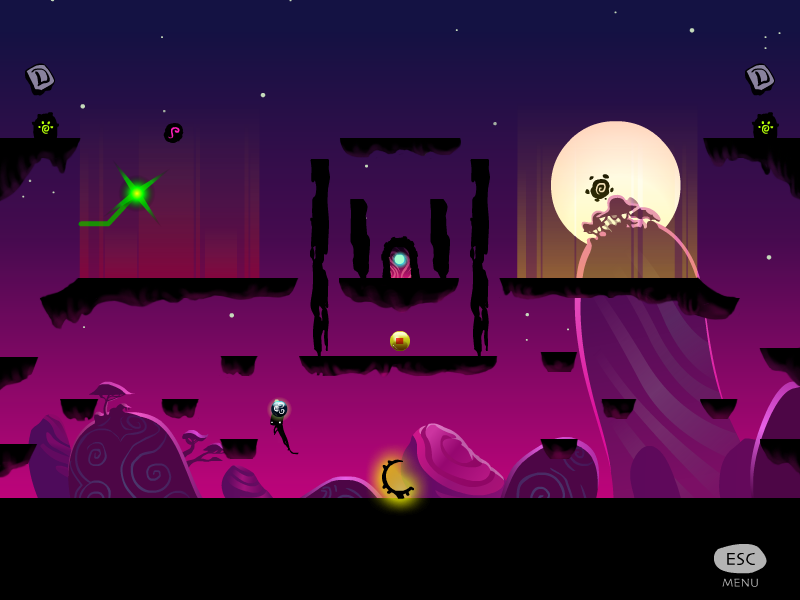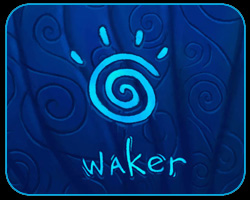|
|
I’ve just returned from a wonderful whirlwind trip to Los Angeles which found me first attending Indiecade in Culver City (where I got to hang out with my friends Doris C. Rusch, Josh Diaz, Brenda Brathwaite, Celia Pearce and Tracy Fullerton – and where, thanks to Brenda, I got to meet John Romero, which was very cool), paying a really terrific and insightful visit to USC’s game lab (thanks, Kurosh!), touring LA first with my best man Talon and his wife Sara and then with Henry and his wife Cynthia, and then finally giving a relatively brand-new talk on designing migratory characters for transmedia stories in Henry’s transmedia class at USC.
I’m now back in Boston, backlogged and trying to fend off a cold (stupid planes). There’s been a number of interesting transmedia-related articles and things popping up across the web while I’ve been traveling. Here are the ones that have struck me as the most interesting:
- Massiverse Launches Dragons vs. Robots. Like pirates versus ninjas, dragons versus robots is one of those concepts that hooks you as soon as you hear it. Whether or not Massiverse can pull it off is anyone’s bet – but they seem to be listening closely to what Henry and the rest of us academic types are advocating, so this should be interesting. My favorite line in Dean Takahashi’s writeup: “[Transmedia storytelling is] sort of like going fishing with a lot of different kinds of lures in the water.” I hadn’t thought of that particular metaphor before, but it’s absolutely perfect. More about Dragons vs. Robots can be found here, here.
- Muse and Transmedia. John Griffiths ponders about how the promotional efforts for the rock band Muse might be read as a transmedia story. I’m not quite sold; this still feels more like a traditional advertising campaign and less like a piece of deliberately plotted transmedia planning. Still, Griffiths is right to consider about the potential for such things. Nine Inch Nails’ Year Zero ARG could definitely be read as a transmedia planning campaign, and I’m sure there’s a case study to be found in the promotional campaigns for U2 and/or R.E.M. in there somewhere.
- J.C. Hutchins’ Sword of Blood transmedia extension is a quilt. Well, a PDF of a quilt, anyway – but it’s still extremely cool. A premium subscription model might have delivered an actual quilt, which would have been a terrific example of diegetic artifact as transmedia extension. (I’m still convinced that clothing and textiles are an as-of-yet largely untapped realm of possibilities.)
- The Upside-Down World of New Media. This brief post from Scott Crawford ponders how transmedia storytelling is an inversion of the brand platform planning model traditionally found in advertising. I’d like to see Crawford return to the subject and expand on what he thinks transmedia storytelling could gain from studying traditional brand platform planning – there’s at least one long, solid essay in there.
- A Transmedia Exercise. This assignment from Malcolm Ryan’s Game Design workshop at the University of New South Wales in Australia seems to be more about solid worldbuilding than about leveraging the unique advantages of transmedia storytelling, but it’s a great way to get students thinking about it.
- What is Branded Content? Tubefilter assembles an interesting panel of four experts who seek to tease out exactly what ‘branded content’ is – and, at the end of the day, sums up their insights thus: “In a world where even the lines of real life and fiction are starting to blur though 3-D and augmented reality technologies, brands and content must work together to create holistic experiences that extend beyond the :30-second spot – and even beyond the delivery platform itself – to form an emotional bond with viewers. Brands and content creators must also realize that old rules no longer apply. They need each other. Content creators need brand sponsors to bring their vision to life and fund a quality production, and brands need content creators to substantively connect with consumers. But none of those things can be achieved without trust. And nothing influences consumer behavior more than an experience that moves them – and a brand they can believe in.” Well said.
- Transmedia Storytelling, ARGs and Civic Engagement. Bonnie Shaw at Echo Ditto provides a solid snapshot of where and how transmedia storytelling, ARGs and civic engagement are cross-pollinating one another – and how it could be improved.
- Seven Projects Selected for Power to the Pixel Pitch. I’ve gotta admit, out of all of these Brand New-U sounds the most intriguing to me.
- Hush on Click 2009. Shoot, it sounds like Click 2009 was the place to be last week – I would’ve loved to hear what Jason Zada had to say about transmedia, and I would have really enjoyed seeing Michael as the master of ceremonies!
- Faris Yacob on transmedia planning, the future of brand communication… You know, the usual. And, as usual, Faris is sharper than razors.
- Anthony Zuiker at the HuffPo. “We can no longer make the audience come to us. We must go to the audience and re-invent ourselves based on behaviors that will never return to the old regime. It will be the convergence of multi-media or trans-media, consuming content ‘specific to the device,’ that will win out going forward. Our attention economy is shrinking while our attentive economy is changing. And while no human being can verbalize with certainty when our behavior shifted, we must realize there has been a shift in the first place if we hope to keep up with it. It’s no longer the wild wild West but the global network of the technological revolution that will shape our consumptive future.” I’m still not crazy about the term ‘digi-novel’, but Zuiker definitely gets it.
- BBC does transmedia with new horror story The Well. Victoria Jaye, the acting head of fiction and entertainment multiplatform commissioning, will be speaking at FoE4 here at MIT in November. I can’t wait to grill her on this one. And I bloody love this quote from writer Melvin Burgess: “A ghost story is perfect for [transmedia], because at the heart of every ghost story is a mystery waiting to be solved – a back story, about how the horror arose and others in the past who have brought it back to life.”
- Levi’s launches an ARG. This sounds suspiciously like the work of a certain cyborg anthropologist I know who’s currently doing some work there at W+K. Amber, is this your doing?
- Joe Digital’s take on “Transmedia 360”. I was with them right up until they name-dropped Lord of the Rings; I’m trying to figure out if they’re referring to the additive comprehension Neil Young was trying to slip into the LOTR game from EA, but the article is pretty vague.
I’m not even going to go into the big ones here – like Don “The Design of Everyday Things” Norman on transmedia as co-creation, or Kathy Hansen’s proposal for how to use transmedia storytelling in job applications. Those are both posts on their own, which I’ll sketch out as soon as I have some time.

September 28, 2009
5:11 pm
Woo-hoo! Waker, the game I wrote for GAMBIT this summer, just won the Bytejacker Game of the Week competition, beating out two really impressive other games, Station 38 and Alchemia – and by a pretty wide margin to boot. Check out what the players themselves had to say at the 5:05 mark of the video clip!

September 25, 2009
12:25 pm
I’m currently in Los Angeles, having coffee while I wait on my best man to finish up a quick audition before we head off for Las Vegas. Therefore, I would like to take this brief minute of downtime to make a couple of blog posts I’d been meaning to publish for a good long while now. First up, several teaching gigs in the field of Comparative Media Studies that I myself would totally be applying for if I already had my Ph.D. I’m posting these partly to help support the field, but also to demonstrate that comparative media studies as an academic discipline is exploding. O brave new world, hey?
MIT: Tenure-Track Faculty Position in Comparative Media Studies
MIT’s Program in Comparative Media Studies seeks applications for a tenured position beginning in September 2010. A PhD and an extensive record of publication, research activity and leadership are expected. We encourage applicants from a wide array of disciplinary backgrounds. The successful candidate will teach and guide research in one or more of the Program’s dimensions of comparativity (historical, methodological, cultural) across media forms. Expertise in the cultural and social implications of established media forms (for example, film, television, audio and visual cultures, print) is as important as scholarship in one or more emerging areas such as games, social media, new media literacies, participatory culture, software studies, IPTV, and transmedia storytelling.
The position involves teaching graduate and undergraduate courses, developing and guiding collaborative research activities, and participating in the intellectual and creative leadership of the Program and the Institute. Candidates should demonstrate a record of effective teaching and thesis supervision, significant research/creative activity, relevant administrative experience, and international recognition.
CMS offers SB and SM programs and maintains a full roster of research initiatives and outreach activities [see http://cms.mit.edu]. The program embraces the notion of comparativity and collaboration, and works across MIT’s various schools, and between MIT and the larger media landscape. MIT is an affirmative action/equal opportunity employer.
Applications consisting of a curriculum vita, a statement of teaching philosophy and experience, a statement of current and future research plans, selected major publications, and names of suggested references should be submitted by November 1, 2009 to:
Professor William Uricchio
Director, Comparative Media Studies
MIT 14N-207
77 Massachusetts Avenue
Cambridge, MA 02139 USA
Miami University of Ohio, Tenure-Track Assistant Professor, Comparative Media Studies
One or more tenure-track assistant professor positions in comparative media studies, beginning August 2010. We welcome applicants from a range of disciplinary backgrounds; the position will be a joint appointment in a developing program in comparative media studies and another program or department in the humanities or social sciences.
Expertise in one or more of the following areas is desirable: history of media; technology and culture; creative non-fiction, documentary, and journalism in digital contexts. PhD by date of appointment.
Candidates should submit a letter of application, a curriculum vitae, three letters of reference, and a sample of recent scholarship to:
Professor Richard Campbell
c/o College of Arts and Science
143 Upham, Miami University
Oxford, OH 45056
Review of applications will begin on October 26 and continue until the position is filled.
More information on this position can be found at http://www.higheredjobs.com/details.cfm?JobCode=175392319.
Middlebury: Tenure-Track Assistant Professor, Comparative Media Studies
The Film and Media Culture Department at Middlebury College invites applications for a tenure-track position in Comparative Media Studies beginning in September 2010. Appointment will be made at the rank of Assistant Professor; Ph.D. preferred, A.B.D considered. The successful candidate will teach courses on the cultural impacts and influences of media technologies, new media as aesthetic forms, and additional contributions to the program’s curriculum in film and media criticism, history, and/or production. Expertise in one or more of these areas is particularly desirable: online video, social software, videogames, new media art, digital media pedagogy, transmedia convergence, media and the environment, or global media. We welcome applicants from a range of disciplinary backgrounds, but the successful candidate should be comfortable teaching in a humanities-centered program anchored in film and media studies as part of an undergraduate liberal arts curriculum.
Candidates should provide evidence of commitment to excellent teaching and scholarly potential. Send letter of application with a statement of teaching and research interests, curriculum vitae, and three letters of recommendation, at least two of which must speak to teaching ability, to:
Professor Jason Mittell, Film and Media Culture Department
Axinn Center
Middlebury College
Middlebury VT 05753
Applications must be received by November 2 to ensure full consideration.
Please forward as appropriate, and see http://go.middlebury.edu/media-search for more information.
Middlebury College is an Equal Opportunity Employer, committed to hiring a diverse faculty to complement the increasing diversity of the student body.

September 22, 2009
10:10 am
Since the announcement that Futures of Entertainment 4 will focus on transmedia, since I’m actually on it (twice – check out August 24th and October 5th) and – most importantly – since Henry asked me to, I’m republishing Henry’s syllabus for the transmedia storytelling class he’s offering at USC this fall. The following post originally appeared at henryjenkins.org on August 11th; if you’re not already following Henry’s blog “Confessions of an Aca-Fan”, then I humbly suggest you have some bookmarking to do!
What follows is Henry’s post, republished in its entirety.

September 16, 2009
1:07 pm
For those of you wondering why I’ve been so silent lately, especially when teh Intarwebs have been so wonderfully flush with transmedia storytelling news, I have two responses:
- I’m in Singapore. I’m currently on the other side of the planet from my regular home base in Boston – seriously, Singapore is a 12-hour time difference from Boston, which keeps things kind of simple but the jetlag is utter hell – and have had my hands full with GAMBIT-related things. (Such as, for example, the launch of Snap Escape, which is now live on Facebook).
- I just launched the new interstitialarts.org. It was an unfortunate scheduling quirk that September 15th, the long-ago announced launched date for the new Interstitial Arts Foundation website and its attached brand-spanking-new Annex of short interstitial fiction happened to fall during this trip. Although I still believe in my heart of hearts that I can work from anywhere, there were some definitely odd things working against me on this one – not the least of which was getting reliable quasi-high-speed Internet connectivity from my hotel room. It’s not easy to redesign a WordPress install in public when your FTP connection keeps breaking every 5-10 minutes. Oy vey.
I will have plenty to say about the recent transmedia storytelling developments once I get back to Boston and things settle down a little bit. Until then, be good – and if you’re in Singapore, come hear me talk at the Students Day at the Games Convention Asia 2009 conference on Saturday!

September 16, 2009
10:00 am
Akrasia, GAMBIT’s arthouse prototype game from the summer of 2008, has been selected to be showcased at IndieCade 2009: The International Festival of Independent Games!
Here’s the official IndieCade mission, courtesy of indiecade.org:
IndieCade supports independent game development and organizes a series of international events showcasing the future of independent games. It encourages, publicizes, and cultivates innovation and artistry in interactive media, helping to create a public perception of games as rich, diverse, artistic, and culturally significant. IndieCade’s events and related production and publication programs are designed to bring visibility to and facilitate the production of new works within the emerging independent game movement. Like the independent videogame developer community itself, IndieCade’s focus is global and includes producers in Asia, Latin America, Europe, Australia, and anywhere else independent games are made and played.
Akrasia is, of course, described on its official home on the GAMBIT site as follows:
Akrasia is a single-player game that challenges game conventions and is intended to make the player think and reflect. It is based on the abstract concept of addiction, which is expressed metaphorically throughout the game.
Spoiler Warning! The game is set in a maze that represents the mind. The maze has two states – a normal and a psychedelic state. To enter the game, the player has to collect a pill-shaped object and thus enters the game as “addict”. From “chasing the dragon” and the experience of dependency to working your way through “cold turkey stage” where willpower is mapped onto navigation skills, this game models the essential dimensions of the addiction gestalt as identified by its creators.
Depending on player behavior and choice, the game can have various outcomes that reflect this behavior. Someone who tries to shake the habit as quickly as possible will find herself in a different situation at the end of the game than someone who indulged in chasing the high. Unlike many other games where the player is forced to learn a specific behavior in order to win the game, this game gives the player a lot of freedom in regard to the realization of the game as text. The interpretation of the game is different depending on how the game is played, thus Akrasia is a prime example of a dynamic, player-dependent meaning generation.
The game is meant to be played several times until all the connections between its various elements – the high-score, the life bar with its symbols, the two creatures that inhabit the maze in its two states, etc. – are decoded and its underlying meaning reveals itself. But although every single element in the game supports one specific reading, the beauty of Akrasia is its interpretative richness. All the elements in the game make sense in regard to one reading, but it is not the only possible one. The experiences that shall be conveyed in every single stage of the game do not only fit one experiential gestalt, but a variety of structurally similar experiences.
Akrasia takes the notion of “meaningful games” to the next level. Play it, experience it and put on your thinking cap.
IndieCade 2009 will be going down October 1-4, 2009 in Culver City, California. There’s all kinds of fantastic programming planned, including the Hand-On Exhibition, a three-day Conference (including GAMBIT co-PI Henry Jenkins and friend-of-the-lab Brenda Brathwaite), an Awards Ceremony, an extensive amount of Outdoor and Pervasive Gameplay, a series of Artist Talks, and, of course, the IndieCade Happening!
Congratulations to Doris C. Rusch (Product Owner), Paul Yang (Scrummaster), Alexander Luke Chong (QA Lead), Louis Teo (Designer), Shawn Dominic Loh (Artist), Zou Xinru (Artist), Law Kok Chung (Programmer), Stephie Wu (Programmer), Erik Sahlström (Audio Designer), Jeremy Flores (Additional Audio), Pradashini Subramaniam (Additional Audio), and Guo Yuan (Additional Audio). Way to go, team!
Several GAMBITeers will be in attendance at IndieCade 2009, including Akrasia product owner Dr. Doris C. Rusch. We hope to see you there!

September 8, 2009
10:00 am
I recently had the pleasure of sitting down with Dr. Mia Consalvo, who is rejoining the GAMBIT US lab as a visiting associate professor this year, for an hour and chatting about her research interests. The resulting transcript has been published in the Fall 2009 issue of In Medias Res, the Comparative Media Studies newsletter.
Here are the first few paragraphs as a preview:
Geoffrey Long: First of all, welcome! Where are you coming from?
Mia Consalvo: I’m coming from Davis Square, but I most recently come from Ohio University’s School of Media Arts and Studies. I’m an associate professor there, and I teach classes in new media, media criticism and analysis, and videogame studies. I wrote a book with MIT Press in 2007 about cheating in videogames, and right now I have two big projects going. One is on the role of Japan in the formation of the game industry and its status now, and the other relates to casual games and casual game players and casual game player culture and those kinds of things.
GL: What stage are you in with these projects?
MC: I’ve written a few smaller pieces that have been articles or chapters for other things that are eventually going to be collected into a book. One of the pieces, which I wrote when I was here at MIT last summer as a visiting scholar, was on the business aspect of Japanese videogame industries and how they’re trying to push more for globalization.
Interestingly, even though Nintendo kind of resurrected the videogame industry in the 1980s after it went bust, and most Western kids grew up playing Nintendo, once Western companies got back up and going there was a decline in sales of Japanese games, so that now Japanese games aren’t quite as dominant in the West. In Japan, it’s still almost completely Japanese games on the top sellers list, but in North America and Europe it’s much more split, and you see Japanese companies trying to figure out how to get that global dominance back. They have plans for different kinds of localization, transnational products, those kinds of things.
GL: When you’re talking about the East and the West, you’re not talking about just Japan and the United States. What is the game sale breakdown like in the rest of the world?
MC: There are three major game markets that companies look at: North America, Europe (and mostly that’s Western Europe) and Japan. Korea has its own special thing with online games, but otherwise they’re kind of too small. North American bestseller lists are clearly mixed as to what games are made where, and Europe is the same. There are few local European products that wouldn’t sell somewhere else, like football games, and the Germans prefer PC games over console games, particularly strategy games.
In Japan, there’s been this dominance of Japanese companies. When I was there in 2005 for a few months, it took me a while to realize, looking at the bestseller lists, “Wait a minute, there are no Western games here!” There were a few, like Halo and The Sims, but it was almost completely dominated by Japanese game developers. Now, because of the downturn in the economy and the declining birth rate in Japan, they’ve seen some declines in their sales, and Japanese companies are more motivated to look globally for other markets.
The complete article can be read online on the CMS site. Alternatively, the full Fall 2009 issue of In Medias Res can be downloaded as a 1.4 MB PDF for on-screen reading or as a 42 MB PDF for high-quality printing. Check it out!

September 2, 2009
12:28 pm
 The folks behind the upcoming animated movie 9 have created a “mad science journal” that could be seen a prequel-esque diegetic artifact, insofar as it includes “ink blots, sketches and doomsday prophesies” as well as a whole bunch of information as to how the ragdoll characters of the film came to exist.
According to the article on io9.com, “Each book is encased in a uniquely numbered burlap bag, featuring a special forward by Ray Kurzweil, behind-the-scenes art, an extensive collection of stills from the film, commentary from director Shane Acker and producers Tim Burton and Timur Bekmambetov, and a DVD of the original short film by Shane Acker which inspired the full-length feature.”
The catch is that only 999 of these books were made, which strikes me as sort of a tragedy. Such a project seems to be absolutely loaded with opportunities for additive comprehension, so ensuring that less than a thousand would-be fans have access to that enriched experience seems like a missed opportunity. (As readers of my Master’s thesis, Transmedia Storytelling: Business, Aesthetics and Production at the Jim Henson Company know, similar art books were released as transmedia extensions for both Labyrinth and The Dark Crystal.) Still, in this day and age, I’d be utterly flabbergasted if some version of the same content didn’t appear either online or in the inevitable collector’s edition of the DVD.

I’ve wanted to say something about this for a while, but I was instructed to keep it under wraps. As the page just went live (and my truncated little bio is up), I feel comfortable making the announcement: I, Geoffrey Long, served as a judge for the 2009 Parsec Awards.
If you’re familiar with the Parsecs, you know what an honor this is. I was floored to discover that my fellow judges included Tobias S. Bucknell, Frank Conniff (Frank from Mystery Science Theater 3000), Ubisoft’s Richard Danksy, Charles de Lint, Cory Doctorow, James Patrick Kelly, Annalee Newitz, Tim Pratt, and a whole host of other luminaries. If you’re not familiar with the Parsecs, here’s how the Parsec Awards website describes them:
Mur Lafferty, Michael R. Mennenga & Tracy Hickman founded The Parsec Awards in 2006 to celebrate Speculative Fiction Podcasting, under the banner of Farpoint Media.
Podcast shows are nominated by fans, and finalists are chosen by a yearly steering committee. Those finalists are then voted on by an independent panel of judges from outside of podcasting. Awards are given in several categories ranging from content to audio quality.
The Parsec Awards Steering Committee and their assignees (as selected by the committee) will determine a list of five finalists in each category. Each podcast will be evaluated by a set of numerical ratings based on criteria specific to the nominated category. These ratings and criteria are to be published separately. Steering committee members and assignees in this process will be recused from any portion of this judging process involving podcasts with which they are associated or have contributed. All participants acknowledge that the awards process involves subjective judgment on the part of those making award determinations and that artistic merit and ranking is highly influenced by personal preference. Nevertheless, every effort will be made in the selection of finalists and awarding the winner to be as fair and objective as possible.
Voting is conducted by secret and secure means, which shall be explained at the time of the award ceremony. Winners will not be informed in advance and the presenters will have no foreknowledge of the outcome. The award will be presented at the Dragon*Con convention held in Atlanta, Georgia, in the country of the United States. Podcast producers need not be present to be awarded but will be asked to participate in the awards show if present.
Alas, I will not be at Dragon*Con this weekend to witness the awards being given, nor do I have any idea who the winners are (so please don’t ask). I’m dying to know how my picks fared against my fellow judges’ picks, so I’m definitely going to be keeping an eye on www.parsecawards.com this week! What I will say is that all the nominees I was asked to review did a bang-up job, and I was well and truly impressed by the quality of the works streaming through my earbuds. Congratulations to all the nominees, and I can’t wait to hear who won!

I’ve been working with the Singapore-MIT GAMBIT Game Lab for a while now, primarily as its Communications Director but also occasionally as a researcher. This summer I had my first chance to write a game with this group, and now said game – Waker by Poof Games – is up and available to play for free on the GAMBIT website! As the game’s developers described it on the game’s page:
Waker is a puzzle/platform game set in the world of a child’s broken dream. As the Waker, the player uses both mind and reflexes to solve puzzles, creating platforms to form a safe path through the dream worlds. Forming the paths, however, is the trick – it is up to the player to figure out how to create each path, and to manipulate the Waker and the world to travel safely through each level. With dynamic obstacles and three difficulty modes, the game offers continuing challenges even for experienced players, while allowing beginners an easier path to the end.
Waker was developed in tandem with Woosh, its abstract variant. Waker offers the same gameplay as Woosh, but also includes a rich narrative and a story that is reflected in its art and cutscenes.
I am thoroughly honored to have been involved with this project for multiple reasons. First, Waker gave me a chance to work with my friends Sara Verrilli, Kevin Driscoll, Scot Osterweil and Lan Le, as well as befriend a bunch of other folks from Singapore, MIT and RISD. Second, the game is absolutely beautiful, thanks to the hard work of Brandon Cebenka, Rini Ong Zhi Qian and Steven Setiawan. I loved the aesthetic of Waker, from the graceful, fluid animation of the cat-monkey creature to the textures to the gentle glow scattered throughout the game. I loved the dreamlike sensibility of the world, and the basics of the storyline that Brendan and the others had sketched out before I was brought onboard was completely up my alley.

I was invited to join the project when it was decided – at the last minute! – that the story needed to be fleshed out some more, so I rewrote the story in an evening, met with Brendan and the others the next morning, did some super-fast re-rewrites and then jumped into the recording booth to do all the voiceover work myself as well. Mercifully I managed to nail the John Hurt-esque narrator’s voice that had popped into my head while writing the thing, so I was thoroughly happy with how well that turned out.
I’m also thoroughly grateful for the opportunity to write a GAMBIT game (complete with the apparently all-too-true-to-the-industry “Can we have this tomorrow?” experience) and for the not-very-true-at-all-to-the-industry experience of being able to perform the role I’d written. If you’re half as much of a fan of Neil Gaiman’s Sandman or Mike Mignola’s Hellboy as I am, I recommend that you go and give Waker a shot. (Hey, it’s free and it runs in a browser window – what’s stopping you? Go! Play it now!)

Please let me know what you think of the game! You can also see what people are saying about the game already at Free Games News and XSp, and follow new reviews for Waker and the rest of the GAMBIT games as they appear at the In the Press section of the GAMBIT site.
Heh. I still get a grin on my face just thinking about that whole experience. I’ve got a new GAMBIT project in the works for this fall, so I’ll keep you posted!
Update (9/1/09): Flytrap Games just published a really funny writeup of the game titled Agile Spirit Cat Required for Mental Roadworks. These guys really got what I was going for:
Dreaming is more hazardous than most people suspect. Every time you sleep, a path forms behind your dreaming self to guide you back to the waking world.
On occasion, however, that path breaks, leaving the dreamer to stand forever stark naked in front of the sixth form girls while Billy Connolly plays the banjo. Or whatever private delusions are appropriate to your particular mental setup.
Fortunately, a ruptured dream path can be repaired by a Waker – a sort of Druidic cat entity which puts us in mind of the mog from Coraline. As one such Waker, players of Singapore-MIT GAMBIT Game Lab’s latest puzzle-platformer must collect “wisps” to restore a lost soul to consciousness.
I am, as they say, well and thoroughly chuffed. (I wish we’d thought of that Billy Connolly nightmare. That would make a thoroughly horrific bonus level.)
Update (9/2/09): Waker is getting even more press! Lewis Denby of Resolution magazine in England makes the following observations:
This odd little pairing is more than a bit interesting to talk about. Woosh and Waker are puzzle/platform games developed by Poof Games for Gambit, which is a collaboration between MIT and the Singapore government. Woosh and Waker are part of an experimental, educational project, to see how players respond to different presentations within videogames.
Launching each game doesn’t immediately throw up too many similarities. But dive into the game proper and you’ll realise they’re both exactly the same in terms of the mechanics and level design. The difference? One presents an anthropomorphic character and introduces a story. The other sees you guiding a bouncy ball around the same platforms, only with a backdrop consisting purely of abstract art. There’s no plot to be found.
It is, of course, very interesting to consider which side of the fence you fall on. Do you prefer the abstract visual beauty of Woosh, or the more evocative, story-driven presentation of Waker? Do you prefer guiding a living character, or a blissfully unaware rolling ball? But what’s particularly brilliant for the player is that both are excellent, seriously clever games. Try them both out, and have a think about the difference in your approach to each one.
Meanwhile, Bart at bontegames.com gives the game a one-line notice, but a user calling itself Lichen Fairy says this in the comments: “The ending is beautiful. The game-play can be a bit frustrating at times but I love the story.” Thanks!
The game has even been picked up in Italy, where a post from indievault.it describes the game as follows:
Benvenuti nel mondo dei sogni… Waker, sviluppato dai ragazzi di Poof Games, vi proietterà in un mondo onirico, nelle sembianze di un waker, una sorta di guardiano del dolce dormire simile a un gatto. Il vostro scopo sarà quello di ristabile il continuum del sogno di una bambina, permettendole così di risvegliarsi da un sonno ininterrotto. Dovrete intraprendere un viaggio lungo tre mondi, ciascuno dei quali è formato da molteplici sottolivelli che garantiscono un’esperienza non certo da mordi e fuggi.
Or, if Google translate is to be believed:
Welcome to the world of dreams … Waker, developed by the young people Poof Games, we will project into a dream world, in the form of a waker, a kind of guardian of sweet sleep like a cat. Your goal will be to restore the continuum of the dream of a child, enabled it to awaken from a sleep uninterrupted. You will need to undertake a journey across three worlds, each of which consists of multiple sub-levels, offering an experience not by hit and run.
This is awesome – and they’re still coming!
Update (9/2/09, again): Perhaps the biggest and best review of Waker just went live – check out Daniel Archer’s glowing profile at JayIsGames!
Waker is a project born from GAMBIT, Singapore-MIT’s game design lab, and the multidisciplinary input shows. The art and animation invoke the phantasmal in such a way that it’s not hard to believe that this idea could have been hauled from the same place dreams come from. Little touches breathe life into the Waker and the world, like the blinking of one eye at a time should you let the creature sit still for a few moments. The music is softly whimsical, the same way a child’s dream should be.
While the writing sets up the game quite marvelously, what with the Wakers and the Dreamtime and associated fantasies, the story starts to fade as the game progresses, being delivered to the player in short injections between one world and the next. It’s a tad disappointing to have the developers weave all this vibrant lore about what happens when the lights go out, only to have it squeezed into the cracks. It would have been nicer to see the story dovetail with the gameplay more smoothly, but there’s still a lot more creativity at work here than your average puzzle game.
…While the game might be short for those who attack it head-on, it’s certainly a trip worth taking, and the dazzling visuals coupled with the imaginative tale of the Wakers marks this game as one of the most innovative puzzlers to date. Now don’t let me keep you, for there’s already a child lost in the slumber, hoping for someone, anyone to show them the way home.
Well? The Waker is waiting.
You can’t see it, but I’m throwing devil horns in the air. It’s true that the story only appears in little bits between the worlds, but given the time constraints and the massive workload on Poof’s shoulders (they made not just one game in eight short weeks, but two! Two, people! Two!) I can safely say that Poof kicked ass. Way to go, guys!

|








